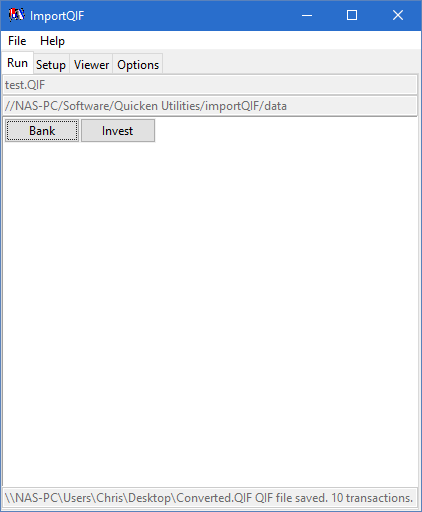
Once a QFX file is imported under an account in Quicken you choose during the import, it “online links” that account to bank settings supplied in that QFX file. Some banks come and go, so your bank may drop QFX support tomorrow.
#WHAT IS QUICKEN QIF FILE CODE#
Quicken checks if the bank code supplied in the QFX file is ‘allowed’ by Quicken for a specific bank and even more bank account type. Quicken does not do any “home calls” during QIF imports, but it does every time you are trying to import a QFX file (yes, you need the Internet connection, your firewall must allow Quicken to go through just to import a QFX file that you have locally on your computer). CSV2QIF - CSV/XLS/XLSX to QIF converter, Bank2QIF - CSV, XLS, XLSX, PDF, QFX, OFX, QBO, QIF, MT940, STA to QIF converter, The Transactions app, which converts from more formats and converts to more formats - will help you create those files. They're slightly different, “Quicken only”, QIF files that Quicken 2012 imports just fine under any account. Guess what, unless you have Quicken Essentials for Mac, QIF files are fully supported, but not the ones your bank offers you for download. On the QIF import screen Quicken tells, then you can import a QIF file only under cash account, offering in the drop-down choice for account selection only cash accounts, but also “All Account” as well. Quicken claims that the QIF format is outdated, and not supported anymore, however, still allows importing a QIF file.

Here are the major differences between QIF and QFX (Web Connect) format when you try to import them under Quicken: Vendor Support

Quicken for Windows up to the latest 2021 (and 2020, 2019) version, supports import for QIF and QFX (Web Connect) files.



 0 kommentar(er)
0 kommentar(er)
